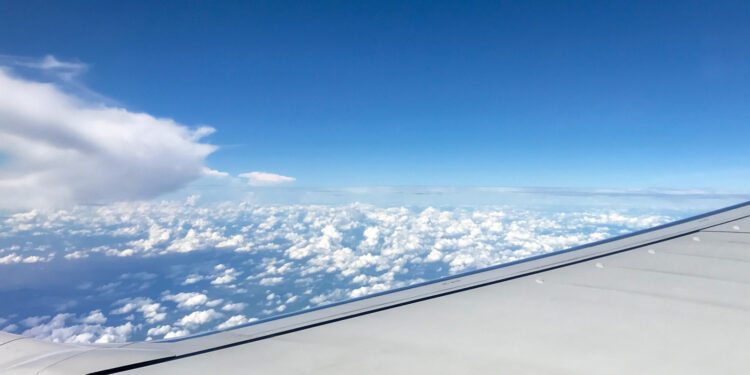Business Aviation Trip Planning Tips: Operations to Japan – Flight Planning, Weather, and NOTAMs

This is a post by author Hiroshi Higashiyama. Hiroshi is representative director for Universal Aviation Japan, which has aircraft ground handling facilities in Haneda, Narita, Sapporo, and Osaka. Hiroshi is an expert on business aircraft operations in Japan and can be contacted at hiroshihigashiyama@universalaviation.aero.
This aviation blog post is part of a series on operating to Japan and continues from our last article entitled “Business Aviation Trip Planning Tips: Operations to Japan – PPRs and Permits.”
When flight planning to Japan, be aware of correct filing procedures, as well as limitations on flight plan revisions. Revisions will not always be approved, particularly if you’re trying to depart earlier than originally scheduled. Your ground handler will be a valuable resource in terms of filing and revising flight plans, in addition to maximizing overall operating flexibility.
The following is an overview of what you need to know:
1. Know ATC procedures and variations
Throughout Japan – even at smaller airports – Air Traffic Control’s (ATC’s) English abilities are good. Flight plans may be filed on-line, via fax, by phone, or in-person with ATC. If issues occur with a flight plan filing, ATC will usually correct the flight plan for the crew, but that depends on the person on duty. Some airports have specific Standard Instrument Departures (SIDs) and Standard Instrument Arrival Routes (STARs) that must be followed. In the case of Haneda (RJTT), SIDs and STARs differ at night due to noise abatement restrictions. Instructions can be found in English at Japan Aeronautical Information Service Center.
2. Special equipment requirements exist in Japan
All aircraft operating within Japanese airspace must be certified for reduced vertical separation minima (RVSM) and capable of Area Navigation (RNAV) 1 and RNAV 5. Required on-board equipment includes traffic collision avoidance system (TCAS)II, transponder, instrument landing system (ILS), VHF omni-directional range/distance measuring equipment (VOR/DME), automatic direction finder (ADF) and 8.33-kHz radio spacing. Be aware that operation of Stage 2 aircraft in Japan is prohibited.
3. Know day-of-operation procedures
Upon arrival at the airport, your ground handler will confirm flight plan needs and flight plan delivery methods with the crew and ensure that the flight plan is on file with ATC. Your ground handler will file the flight plan for you, if desired, and coordinate any revisions. Latest local weather and Notices to Airmen (NOTAMs), for all airports in Japan, can be obtained from your ground handler or online at http://weather.noaa.gov/weather/coded.html.
4. Consider flight plan revision options
If there are arrival or departure delays, your ground handler will work with ATC to ensure that the flight plan is amended and remains on file. Should you arrive early or late – outside the official airport slot window – ATC will permit you to land. However, this is not always the case if you wish to depart early or late. If an aircraft misses a departure airport slot, a new slot must be obtained. If the next available slot is not close to the re-scheduled departure time, a new flight plan may need to be filed to conform to a new departure slot. It’s always more difficult to obtain permission to leave earlier than originally planned, rather than later.
5. ATC must approve aircraft engine startup
Crews need clearance from ground control to start engines and/or to move from a designated parking area under power or by tow. At some parking locations, you will not be able to power out and will need to coordinate a tow, and tow bar availability with your ground handler. When you land, ATC will provide directions about which taxiways and aircraft parking spot to use. A “follow-me” cart can be provided at crew’s request, but it’s not mandatory.
6. Avoid common flight-planning mistakes
Common errors surface from time to time when operating in Japan. Some of these errors include filing a flight plan time that differs from your approved airport slot time, providing an incorrect aeronautical fixed telecommunication network (AFTN) address for the ICAO portion of flight plan, and filing incorrect SIDs or STARs. If the flight plan arrival or departure time varies – by even 5 minutes – from airport slot time, it may be rejected. Be particularly careful in filing SIDs and STARs to/from RJTT as they vary depending on time of day. If you’re departing RJTT at night but file SID/STAR approved for daytime ops, your flight plan will be rejected and must be revised/resubmitted.
7. Take care not to overfill aircraft fuel on arrival
Some operators prefer to fuel on arrival, which occasionally creates issues in Japan, due to incidents of fuel overspill on hot days. When an aircraft leaks fuel onto the tarmac, this causes the fire department and airport authorities (perhaps a contingent of 10 officials) to come out to review the situation. In such cases, operators will be liable for associated charges, and flight operations may be delayed. When fueling on arrival, it’s best practice not to top off tanks. Additional fuel can be uplifted, pre-departure, if max-endurance leg is planned.
8. Consider weather and weather nuances
Typhoon season in Japan is generally September-October. Certain airports may shut down – as advised by NOTAM – for 24 hours or longer during these extreme weather events. Thunderstorms occur June-September. Impacted airports, and all ramp activity, may temporarily shut down for 20-30 minutes at a time. During these brief weather events, ground handlers are not permitted on the ramp – for safety reasons – and aircraft on approach may be diverted or put into holding patterns. Certain airports in Japan are prone to heavy early morning fog conditions. While fog may cause occasional flight diversions and delays, airports remain open.
9. Snow conditions restrict overnight parking options
Snow conditions occur in Japan December through late March, and many airports in the north restrict or prohibit overnight parking during this period. Airport authorities do this is so that snow can be cleared at night. Some airports – Sapporo (RJCC) in particular – prohibit overnight General Aviation (GA) parking December 1-March 31. Other airports, including Sendai (RJSS), issue temporary restrictions on overnight parking based on snow conditions and forecasts. Restrictions and prohibitions are advised via NOTAM, but it’s best to check with your ground handler during winter operations as restrictions are not always announced. Be aware that de-icing equipment and facilities are limited in Japan, and priority always goes to scheduled commercial operations. Japanese airlines own this equipment, and, while GA handlers have access to it, you may wait a couple of hours or more to be de-iced.
Conclusion
While extreme weather is not a significant issue most of the year in Japan, there are typhoon and heavy tropical rain conditions to be aware of. When planning a trip to northern Japan during winter, operators need to be aware of overnight parking restrictions and potential for long delays should de-icing services be needed.
Questions?
If you have any questions about this article or operating to Japan, contact me at hiroshihigashiyama@universalaviation.aero.
Later we will discuss hotel, local area, and culture for your trip to Japan.




